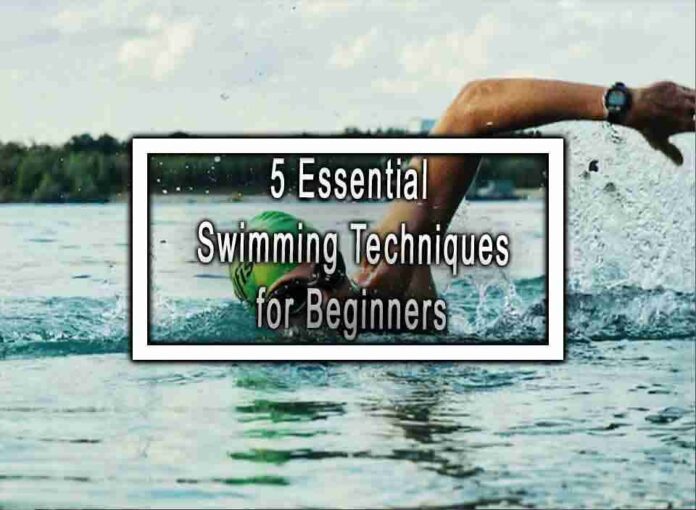Learning to swim is a valuable skill that can enhance your safety and enjoyment around water. Here are five essential swimming techniques for beginners to focus on:
-
Floating and Breathing:
- Before diving into strokes, it’s crucial to become comfortable in the water. Practice floating on your front and back, using deep breaths to control your buoyancy. This skill helps you relax and maintain your balance while in the water.

-
Front Crawl (Freestyle):
- The front crawl, also known as freestyle, is one of the most common and efficient swimming strokes. Focus on rhythmic breathing by turning your head to the side while your arm is out of the water. Alternate your arm strokes and kicks, maintaining a streamlined body position.
-
Backstroke:
- The backstroke involves swimming on your back. Use alternating arm movements while your legs perform a flutter kick. Keep your body flat and maintain a straight line as you swim. Use a simple sculling motion with your hands to help steer and balance.
-
Breaststroke:
- The breaststroke is a slower but controlled stroke that requires coordination between your arms, legs, and breathing. Push your arms forward, then bring them back while simultaneously doing a whip-like kick. Lift your head above water to breathe.
-
Treading Water:
- Treading water is an essential survival skill that allows you to stay afloat without using much energy. Use a combination of gentle arm and leg movements to keep your head above water.
Here are a few additional tips for beginners learning to swim:
- Start in a shallow area: Begin in a pool or area where you can touch the bottom and gradually move to deeper water as you gain confidence.
- Learn in steps: Focus on mastering one skill before moving on to the next. For example, practice floating before attempting strokes.
- Practice with a buddy: Whenever possible, practice swimming with a friend or under the supervision of a trained instructor.
- Be patient: Learning to swim takes time and practice. Don’t rush the process; focus on gradual improvement.
If you’re new to swimming, consider taking lessons from a certified swimming instructor. They can provide personalized guidance, teach you proper techniques, and ensure you build a strong foundation for safe and enjoyable swimming experiences.









